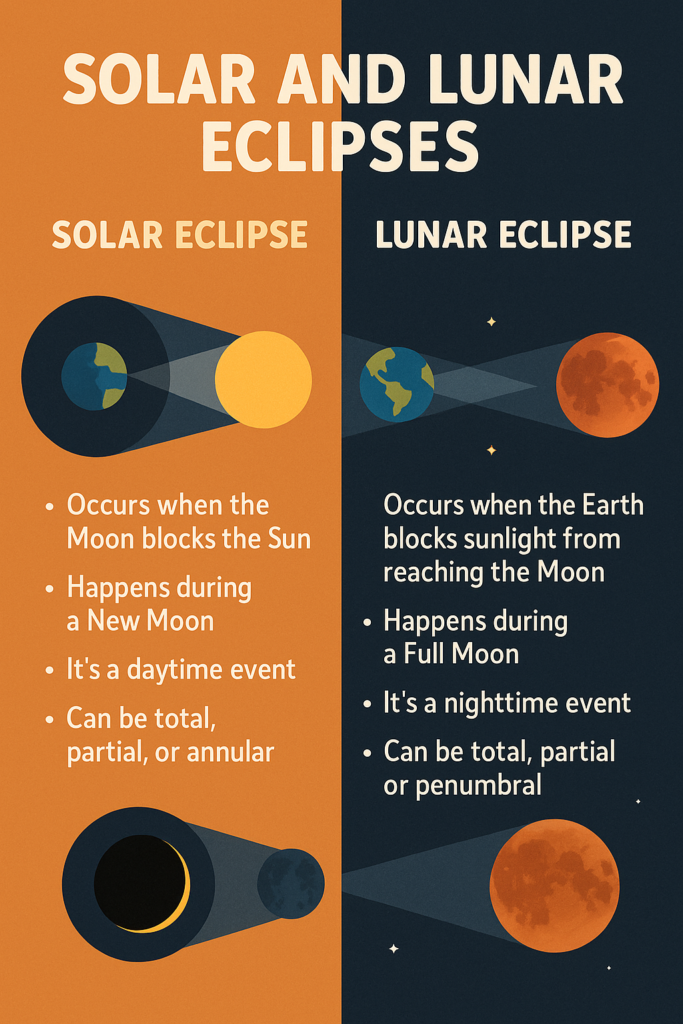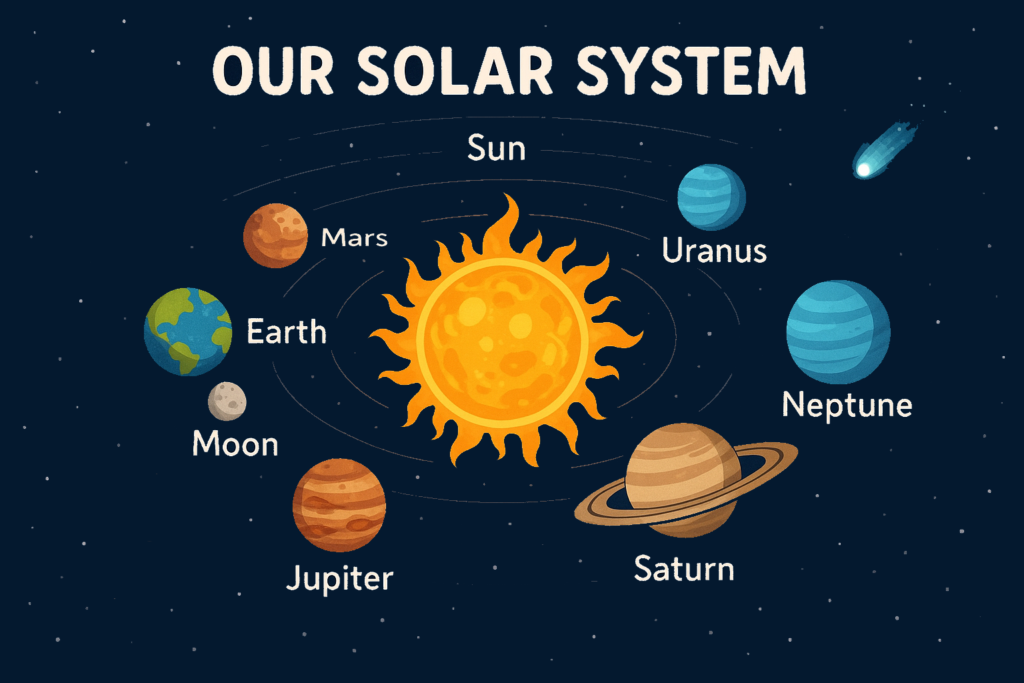Solar Eclipse:
A solar eclipse happens when the Moon comes between the Earth and the Sun, blocking all or part of the sunlight from reaching Earth. It’s like the Moon “shadows” the Sun.

There are three types of solar eclipses:
- Total Solar Eclipse: The Moon completely covers the Sun, making the sky dark during the day. This only happens in a small area on Earth’s surface (called the “path of totality”).
- Partial Solar Eclipse: Only a part of the Sun is covered by the Moon. The Sun looks like a crescent from the Earth.
- Annular Solar Eclipse: The Moon is too far away from Earth to completely cover the Sun, so we see a ring of sunlight around the dark Moon. This is called the “ring of fire.”
A solar eclipse is a rare event, and it can only happen during a New Moon, which is when the Moon is directly between the Earth and the Sun.
Lunar Eclipse:
A lunar eclipse happens when the Earth comes between the Sun and the Moon, and the Earth’s shadow blocks the sunlight from reaching the Moon.
There are three types of lunar eclipses:
- Total Lunar Eclipse: The Earth’s shadow completely covers the Moon. During this eclipse, the Moon can take on a reddish color, often called a “Blood Moon,” because the Earth’s atmosphere scatters the Sun’s light, allowing only the red light to reach the Moon.
- Partial Lunar Eclipse: Only a part of the Moon moves into the Earth’s shadow. You can see a “bite” taken out of the Moon.
- Penumbral Lunar Eclipse: The Moon passes through the Earth’s outer shadow (called the penumbra). The shadow is very faint, so it’s hard to notice, but the Moon may look a bit dimmer than usual.
A lunar eclipse happens only during a Full Moon, when the Earth is directly between the Sun and the Moon.
Key Differences:
- Solar Eclipse:
- Occurs when the Moon blocks the Sun.
- Happens during a New Moon.
- It’s a daytime event.
- Can be total, partial, or annular.
- Lunar Eclipse:
- Occurs when the Earth blocks sunlight from reaching the Moon.
- Happens during a Full Moon.
- It’s a nighttime event.
- Can be total, partial, or penumbral.











